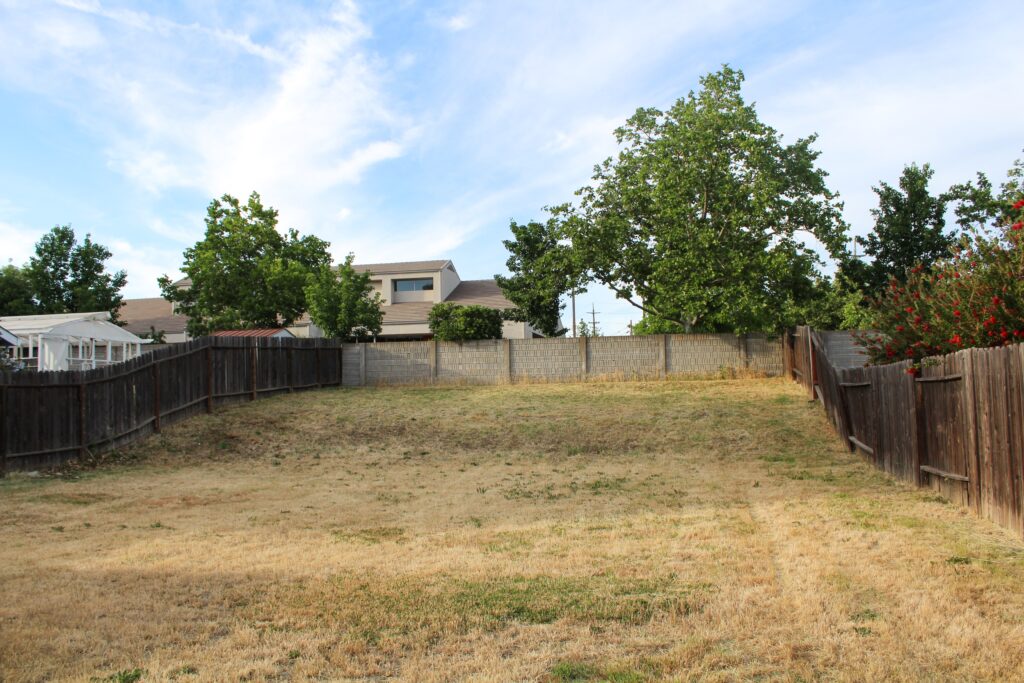Battling the Elements: Protecting Your Lawn from Drought Stress
As we navigate through a season marked by sparse rain fall and unseasonably cool temperatures, homeowners must remain vigilant about the potential dangers their lawns and landscape plantings face.
By now you’ve seen your lawn and landscape hit by drought stress, a condition that occurs when plants receive inadequate water to meet their needs. In this article, we will delve into the perils associated with drought stress and offer essential tips to help you protect your lawn and landscape plantings during dry spells and cool, dry periods.
The Impact of Drought Stress
Weakened turf grass
During periods of drought, lawns suffer from a lack of moisture, which hampers their ability to carry out essential functions like photosynthesis. As a result, the grass becomes weak, loses its vibrant green color, and can develop patches or die off in severe cases. This not only diminishes the beauty of your landscape but also creates an inviting environment for opportunistic weeds to take over.
Reduced plant vitality
Drought stress affects not only turf grass but also landscape plantings. Shrubs, flowers, and trees can all fall victim to water scarcity. Without adequate hydration, plants struggle to take up nutrients, leading to reduced growth and vigor. Leaves may wilt or become discolored, and flowers may fail to bloom. Prolonged drought stress can even weaken the root systems of plants, making them more susceptible to pests and diseases.
Increased weed invasion
Prolonged dry spells weaken lawns and landscape plantings, creating gaps and thinning areas that are highly susceptible to weed infestations. Weeds have a remarkable ability to thrive under adverse conditions, and they can quickly take advantage of the weakened state of your turf grass and plants. Once established, they compete with desirable plants for water and nutrients, further exacerbating the damage caused by drought stress.
Tips for Protecting Your Lawn and Landscape
Mulch deeply
Apply a layer of organic mulch around landscape plantings. Mulch acts as a protective barrier, reducing evaporation and helping to retain soil moisture. Additionally, mulch inhibits weed growth, which saves water and minimizes competition for resources. Ensure the mulch is spread evenly, avoiding direct contact with the plant stems to prevent rot or disease.
Maintain properly
Maintain your lawn by mowing at the appropriate height for the specific grass species, as longer grass blades provide shade and reduce moisture loss. Avoid over-fertilizing, as this can lead to increased water requirements. Regularly inspect your landscape plantings for signs of stress, pests, or diseases, taking appropriate action promptly. Learn more about mowing heights in our helpful “3 Ways to Fight Drought Stress” video.
Irrigate wisely
Water your lawn and landscape plantings deeply and infrequently rather than shallowly and frequently. This encourages plants to develop deep root systems, which helps them access moisture stored in the soil during dry periods. Consider using automated irrigation systems with timers to ensure consistent watering, preferably during the early morning hours when evaporation rates are lower.
Chronically dry soils can become hydrophobic (moisture resistant). If you try to water your lawn when it is this dry, the soil will tend to channel moisture away from grass and plants, causing even more stress for them. Overwatering to compensate for deep drought conditions can lead to fungus and rot.
Bonus Tip – Do What the Pros Do
The lawn care professionals at GreenStripe use a professional moisture management product called Hydretain to ensure their lawns maintain the moisture levels needed to stay healthy while cutting back on the need for lawn watering. The complex Hydretain molecule forms a thin persistent film on root surfaces. Once treated, instead of channeling moisture away, the soil now permits absorption and dispersion of water, making it readily available to the root systems of your plants.
Let us help your lawn withstand drought! Contact us today about getting Hydretain applications for your lawn and plantings.



